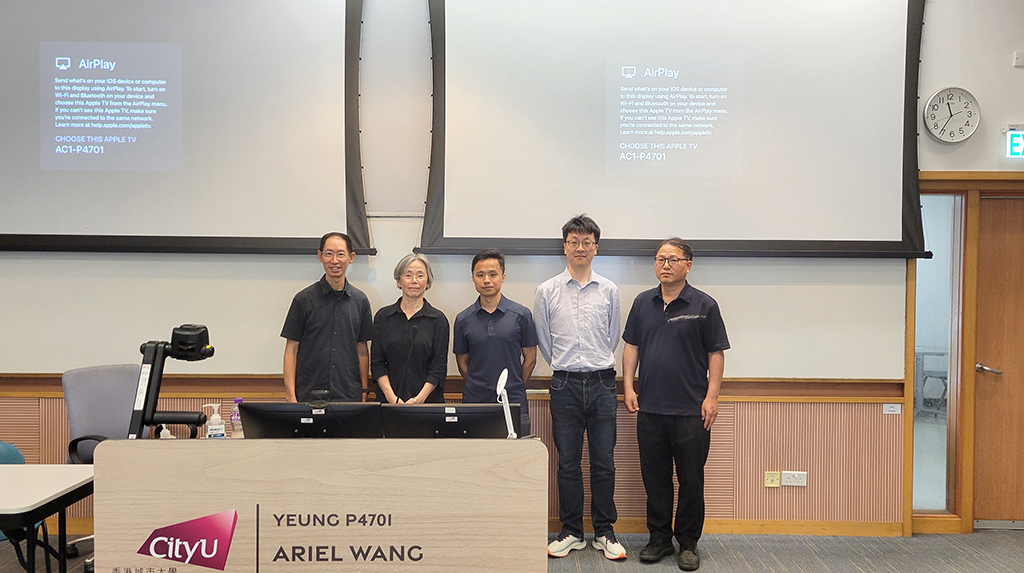

On May 16th, Prof. HSUEH Yi-Ping, Distinguished Research Fellow of the Institute of Molecular Biology, Academia Sinica, visited City University of Hong Kong and delivered a lecture titled “Autism Spectrum Disorders: From Genes to Circuits and Interventions in Mouse Models”.
Prof HSUEH first introduced CTTNBP2, a synaptic protein and the gene mutations are associated with ASD. She revealed that CTTNBP2 regulates synaptic levels of zinc-binding proteins and is crucial for dendritic spine formation and social behavior. She also demonstrated that CTTNBP2 gene mutations had sex-specific effect, with male mice showing more severe social deficits and disrupted neural circuits.
Expanding on this, she uncovered the interaction of two ASD related protein, CTTNBP2 and SHANK3, via liquid-liquid phase separation (LLPS). CTTNBP2 and SHANK3 form dynamic condensates that are regulated by zinc ions at the synapse. Zinc triggers a phase transition, influencing the synaptic localization of the proteins and their interactions. This reveals a new molecular mechanism by which synaptic protein organization in ASD may be disrupted.
Lastly, Prof HSUEH introduced TBR1, a transcription factor linked to ASD. She utilised Tbr1-deficient mice to investigate circuit-level dysfunction. She found that loss of TBR1 led to disrupted circuits and ASD-like behaviours in mice. Overall, Prof HSUEH’s lecture illustrates how mutations of ASD linked genes disrupt brain function at multiple levels, from the molecular mechanism in the synapse to brain circuit.
